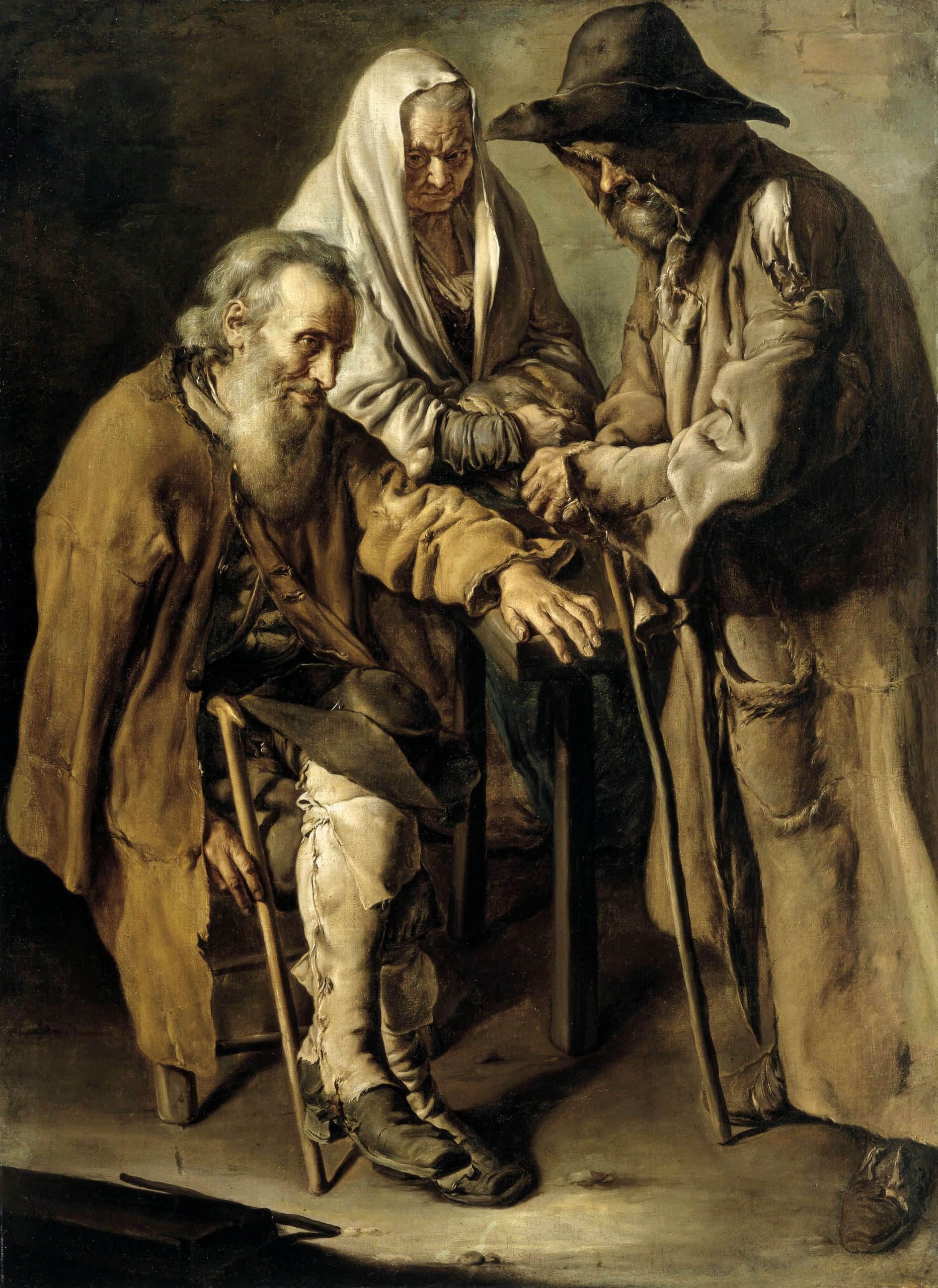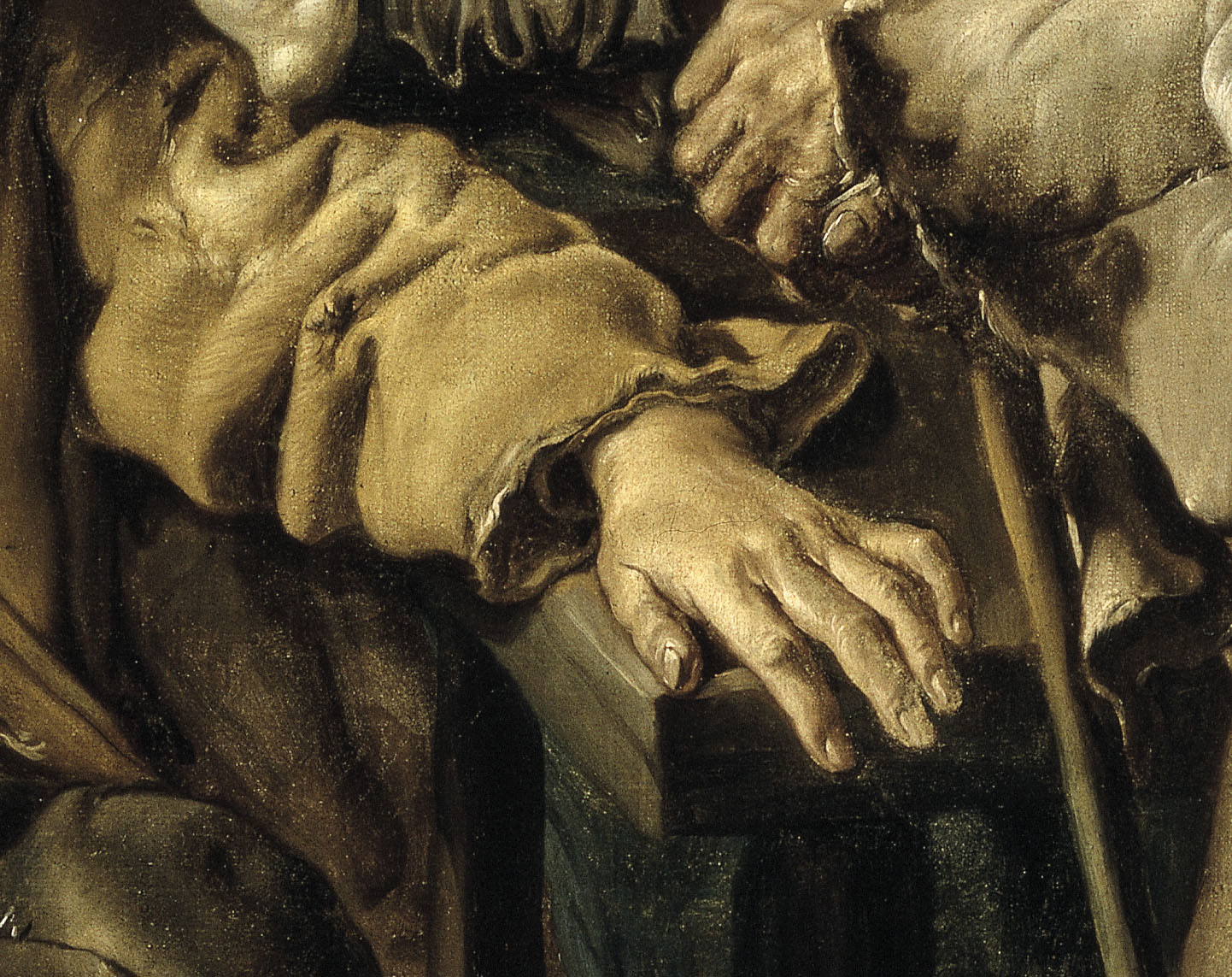Dr. Xavier Sierra i Valentí

Three Beggars, Giacomo Ceruti, known as Il Pittocchetto, 1736. Thyssen-Bornesmiza Collection, (on long-term loan to the Museu Nacional).
In this painting by Giacomo Ceruti we can see three old beggars dressed in rags. Ceruti, who was also known as “Il pittochetto” was a painter of the late Italian Baroque, active in the north of the Italian peninsula, where he was highly regarded above all for his large-size paintings of humble scenes, often featuring beggars.
In this painting, therefore, we see three beggars. One of them, with a long white beard, has a bandaged leg. He would therefore seem to be suffering from some type of mobility problem and he has to use a stick to walk.
If we look closely at this figure’s hand, we can see that his fingernails are longitudinally ridged, something that can often be seen in elderly people. But in some areas the nail has lost its lustre, something that looks to me like trachyonychia.
Trachyonychia is an alteration of the nail plate that is characterized by an increase in longitudinal ridges, depressions and pits (like the surface of a thimble). The result is a misshapen fingernail, rough to the touch, dull looking, without the usual lustre. The thumbnail also seems to be a little detached from the nail bed.

Three Beggars (detail), Giacomo Ceruti, known as Il Pittocchetto, 1736. Thyssen-Bornesmiza Collection (on long-term loan to the Museu Nacional).
Of course one must be very cautious when interpreting all these details. We could easily consider it as a mere pictorial device. However, one must not underestimate artists’ powers of observation, and more so in a period when painting was attempting to reflect with the tiniest details the reality that surrounded them.
As I have already said, the longitudinal ridging of the fingernails, if it is regular, is often seen in elderly people, and this seems to be the case with this figure. But sometimes certain nutritional deficiencies, such as the lack of amino acids or vitamins, can accentuate it, thus giving us a pictorial testimony of the poor diet that the figures depicted presumably had.
Trachyonychia, or the loss of lustre of the fingernails, can also be a symptom of certain general disorders such as lichen planus, psoriasis, alopecia areata or ichthyosis. And it can also be caused by certain external agents. Naturally, the scant precision of the painting does not allow us to completely rule out the presence of onychomycosis, in the past a very common disorder and which we can find clearly depicted in other paintings, such as Portrait of a Married Couple, by Gabriel Zehender (1525) (Museo Thyssen-Bornemisza, Madrid).
In any case, a close look at these alterations of the fingernails enables us to give Ceruti’s account more credibility, and he shows great precision and meticulousness when depicting the tiniest details of the beggars he took as models for his painting.
Related links
Blog Un dermatólogo en el museo
Dr. Xavier Sierra i Valentí
Museu d’Història de la Medicina de Catalunya
Museu d’Història de la Medicina de Catalunya







